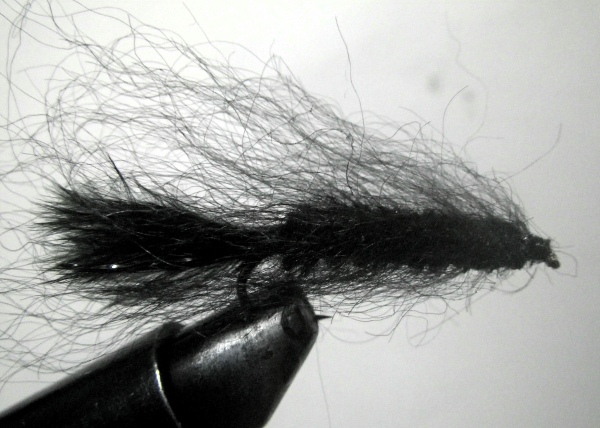
The black Mohair leech is my go to streamer pattern for sea run brook trout and Steelhead. It’s a well known pattern, with many tying tutorials around the web. Pictured above is my variation on the mohair leech. I make a few additions in the tying process that really help improve durability as I feel that when tied traditionally, this fly tends to fall apart quite quickly. Olive and white work well for this pattern, but my preferred colour is black.
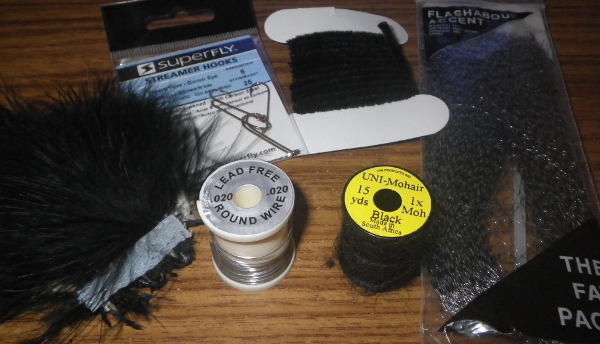
Material List:
- A spool of Mohair yarn.
- Streamer hooks. Most of mine are tied on size 6 or 8.
- Marabou.
- Chenille.
- Lead free wire, a bead head would also work.
- Choice of flash. I use Flashabou grizzly accent silver/black in this tutorial.
- Black thread.
- Head cement or hard as nails clear nail polish.
You will also need a bobbin or something similar for applying the head cement. The brush that comes with many bottles of head cement will not work well with all the loose fibres in this pattern.
How to tie a mohair leech
Step 1: Select a size 6 or 8 steamer hook and mash the barb in the vice.
Step 2: Wrap on desired amount of lead free wire for weight. I fish tidal rivers and estuaries with strong current, so I like to tie my streamers fairly heavy.
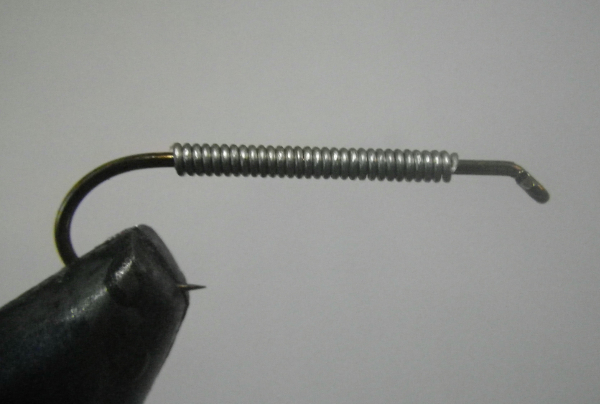
Step 3: Tie in Marabou tail.
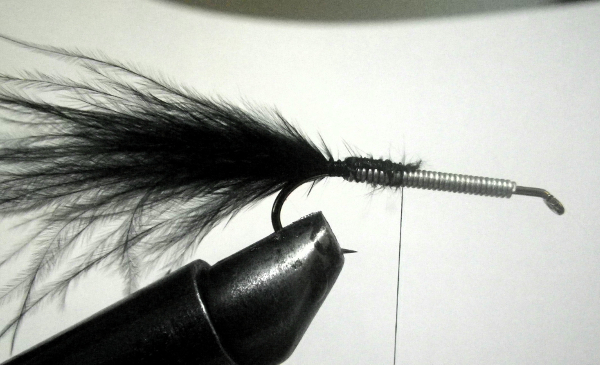
Step 4: Pinch off the tail end of marabou fibres with your fingers, this makes a more natural cut then using scissors. The fibers should be pinched off to be approximately a hook length long.
Step 5: Tie on your choice of flash. I like to keep it minimal, just one strand of flash per side but you can add more if you like.
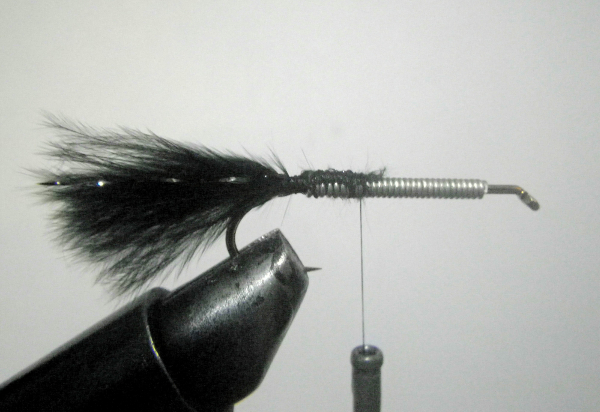
Step 6: Tie in a strand of Chenille and a strand of mohair near the hook bend.
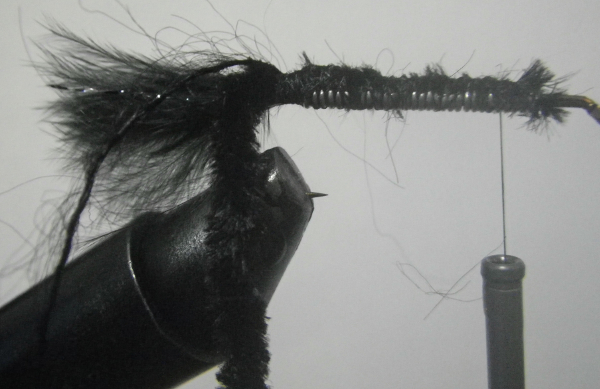
Step 7: Make touching wraps with the chenille towards the hook eye. The chenille creates a base for the mohair yarn to sit on. I find that if I wrap the mohair yarn onto the hook without a base, it tends to fall off the lead free wire underneath after a few casts. The chenille is bulky enough to prevent the mohair yarn from slipping out of place.
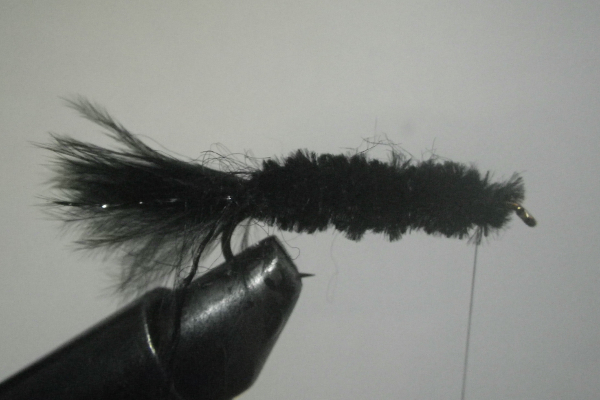
Step 8: Make touching wraps forward with the mohair yarn, pulling the fibres rear wards as you wrap.
Step 9: Whip finish and apply head cement to the head of the fly.
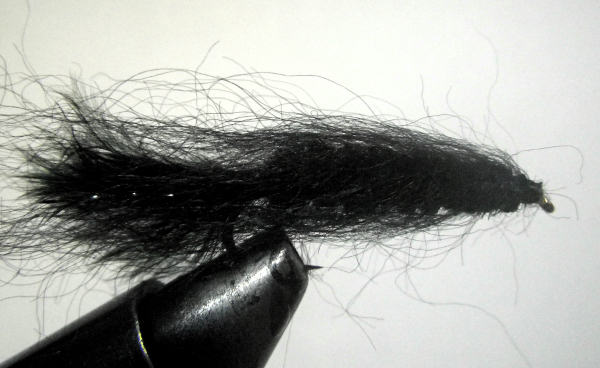
Step 10: Spread the fibres evenly to either side like in the image below. Carefully apply Zap-a-gap or head cement to the top of the fly at the base of the mohair fibres, being careful not to accidentally get any head cement anywhere else. You want the head cement to be quite thing and “sink” into the thread wraps rather than coat them. This will firmly cement the mohair fibres in place, greatly extending the life of the fly. Be sure to pay extra attention to the wraps near the rear of the fly by thehook shank, as they are the most prone to coming loose.
If you buy anything below, I get some beer money (commission).
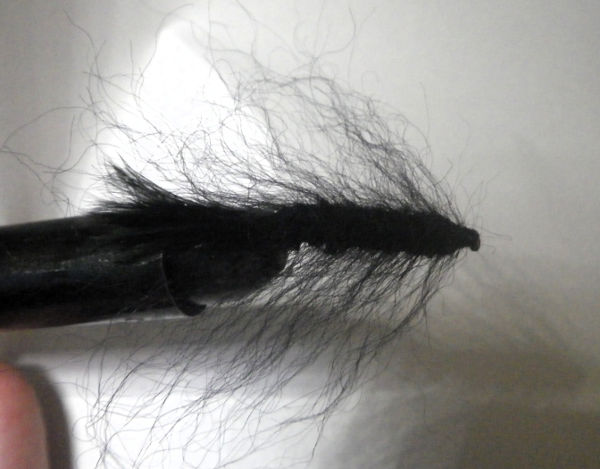
Step 11: Let fly dry out.
Step 12: Brush the Mohair fibres with a tooth brush and reposition fibres so they are even around the fly. You should end up with a nice and full looking fly.

Step 13: Done! All that’s left to do now is catch some trout!
I’ve made the chenille and head cement additions to the fly after fishing some flies I tied in the more traditional way that fell apart. The thread wraps tended to fall rearwards and wrap themselves around the hook bend, or I would end up with a large patch of lead free wire showing. Since I’ve been fishing the modified flies I’ve found them to last much longer.
As mentioned before the Mohair leech is a fantastic streamer fly for trout. I find letting the line and fly sink to the bottom before retrieval increases the number of takes. Retrieve speed varies day to day but typically stripping the fly at a fairly steady pace produces consistent results.

Glad to see you back Ben. I was afraid we’d lost you. This and a woolly bugger are the only streamers I fish. I like the modifications you made as they do get frazzled in a hurry. Thanks.
Thanks Howard! Yeah life got busy, but trying to make more time for the blog going forward.
It’s nice to have confidence lures like that! This is definitely mine.
Ben
Killer pattern for some quality browns and rainbow, great job at the bench!! Thanks for sharing
Thanks bill, the pattern produces really well!